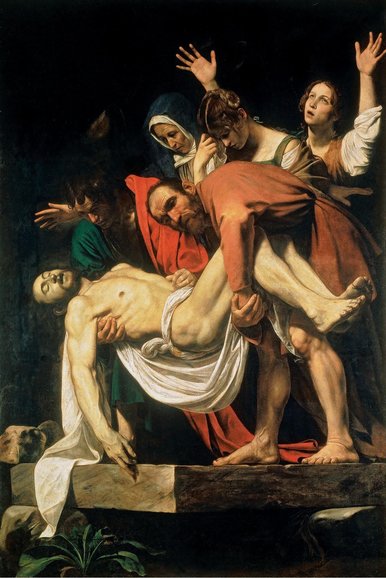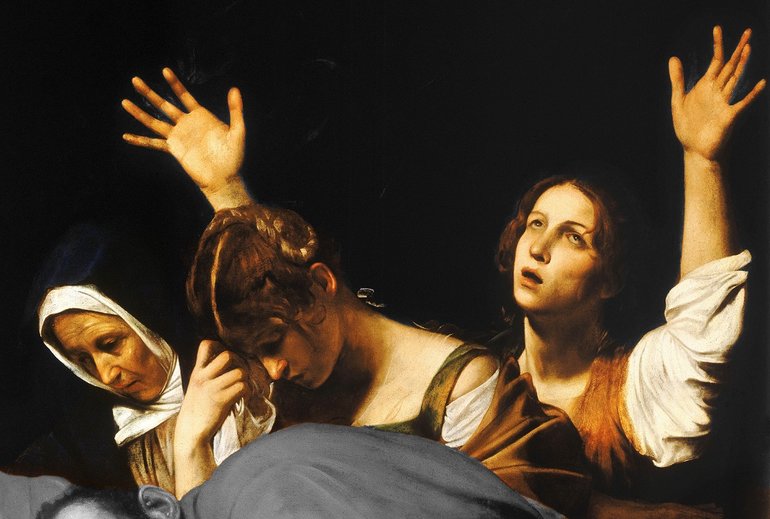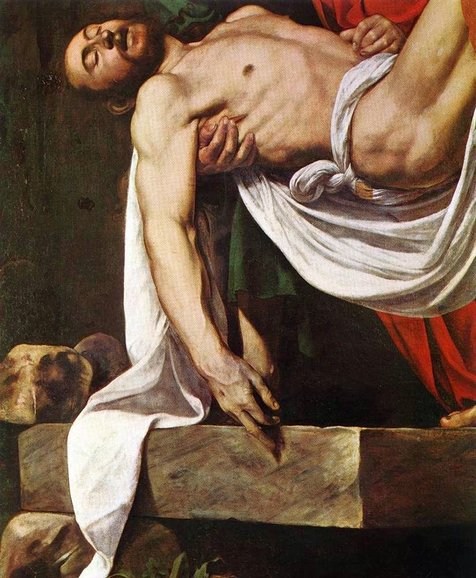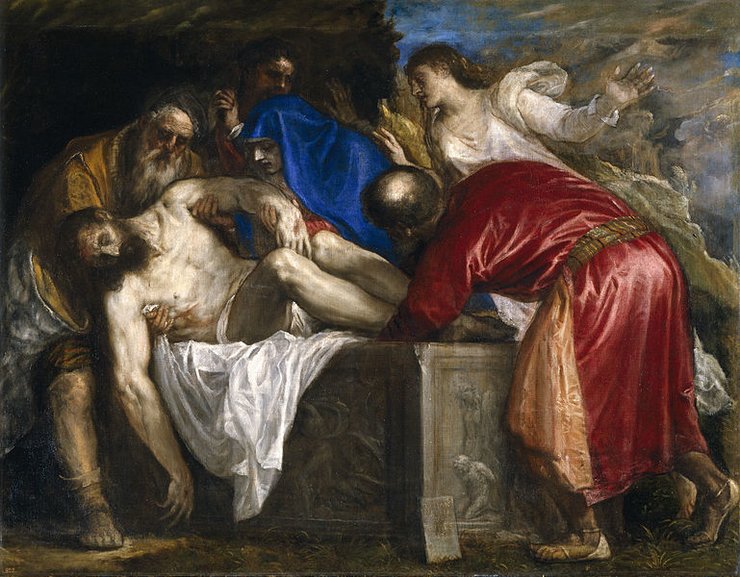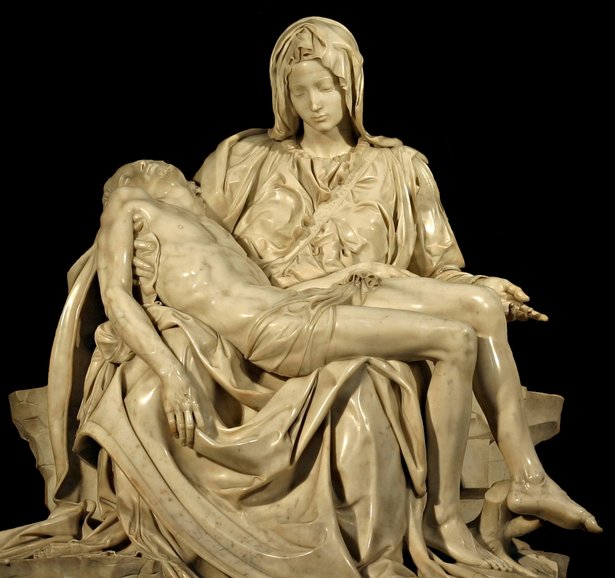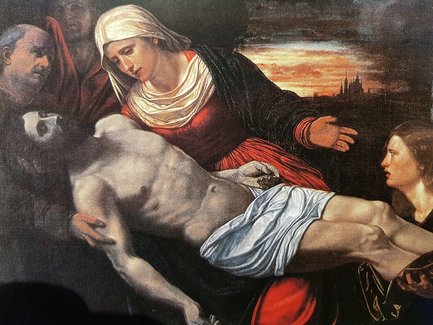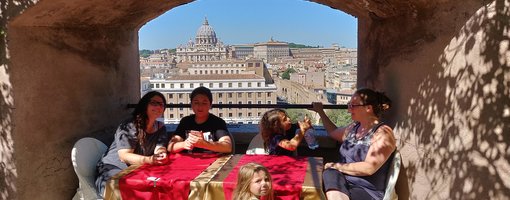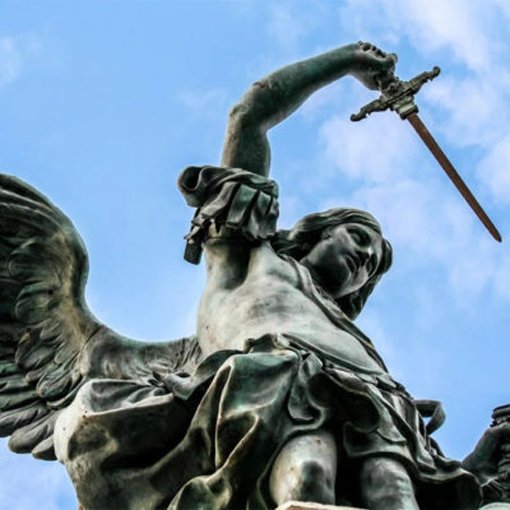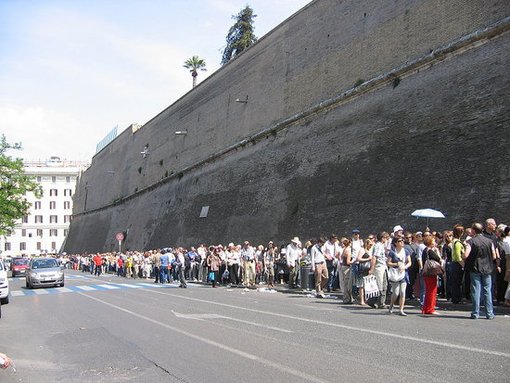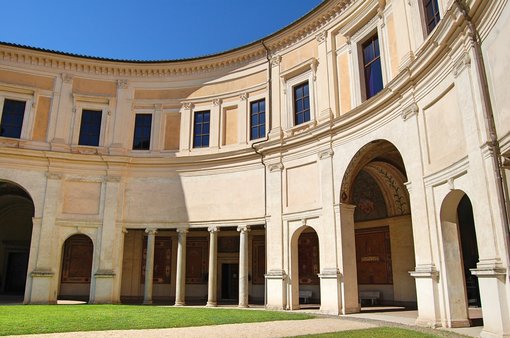La Deposizione Di Caravaggio
The canvas of the Deposition of Christ, currently kept in the Vatican Painting Gallery, was painted by Caravaggio for a chapel of the Church of St. Mary in Vallicella in Rome. Following the Treaty of Tolentino of 1797, on specific disposition of the French, it was removed from the altar and given to the architect Giuseppe Valadier. Shortly before it had been copied by the painter Michele Koeck (whose copy can be found today in the aforementioned church).
The work was then transferred to Paris and in 1816 it finally returned to Rome, following the famous mission that the ambassador Antonio Canova made to bring back to Italy the artworks stolen during the Napoleonic period: however, the Deposition was no longer placed in its original location, preferring to keep it in the Vatican.
The Chapel In St. Mary's In Vallicella
The story of the commission deeply links the Caravaggio canvas to the history of St. Mary in Vallicella, the so-called "New Church" wanted by St. Philip Neri. On June 13th 1577, indeed, Pietro Vittrici, spiritual son of St. Philip Neri and very close to Pope Gregory XIII, obtained the privilege of having a chapel dedicated to the Pietà inside the New Church, to whose construction he had collaborated helping financially the Oratorians. In 1580 Vittrici agreed with the Philippine Fathers to endow the chapel with a patrimony of a thousand scudi destined to its decoration, but in 1588 the original project of the New Church underwent some modifications: infact, in order to solve some static problems, it was decided to implement the demolition of the side chapels to add two minor naves.
In spite of the much smaller dimensions, Vittrici took on the commitment to decorate the new chapel, but his death at the beginning of 1601 left the honor and the responsibility on the shoulders of his nephew Gerolamo, who commissioned the work to Caravaggio.
The Iconographic Context Of The New Church
The Deposition by Caravaggio should therefore be read in the context of its original destination, inside the chapel that Vittrici, oratorian penitent, wanted to build at his own expense within the iconography of St. Mary in Vallicella.
In the two side aisles of St. Mary in Vallicella are represented, chapel after chapel, the Mysteries of the Rosary: on the left the joyful mysteries, on the right and in the transept the sorrowful and glorious ones. These mysteries aim to recall the salient events of Christ's life, from the Annunciation to the Coronation of Mary, following three fundamental stages: joy, sorrow and glory.
The path, in this sense, is very clear: in the first chapel are the first four sorrowful mysteries, with the Crucifixion of Scipione Pulzone on the altar and in the apse basin the works of Giovanni Lanfranco (Flagellation, Coronation of Thorns, Jesus in the Garden), while in the second the Deposition by Caravaggio is flanked by the first of the glorious mysteries, the Resurrection. In this chapel, therefore, the moment of pain borders on the moment of glory.
The Holy Representation
Caravaggio's canvas should therefore be read within this iconographic context.
The painter sets up a large theatrical scene, interpreting the sacred medieval representations with the theological doctrine following the Council of Trent and marked by the strong inspirational figure of Federico Borromeo.
The compositional scheme is organized on a majestic group of figures, almost sculptural, built on a diagonal curved line that joins the lower left corner to the upper right corner, creating a trend that flows over the figures in both descending and ascending directions. In this way a dynamic tension is created in the observer: the gaze follows the deposition downwards, but at the same time it bounces in the opposite direction, ending on the face of the young girl who has her hands outstretched upwards.
The Gospel story is synthesized here, as Caravaggio usually does, in an action that runs through time, even if it is statically blocked in a pictorial image: it is a painting that on the one hand tells what is happening and on the other alludes to what will happen immediately after (the Resurrection, present on a decorative level in the very same chapel).
The Three "Mary"
Caravaggio represents in his Deposition the three women who were at Jesus' cross: the Virgin Mary, Mary of Cleophas and Mary Magdalene.
The mother of Jesus stretches out her arms, as if she wanted to physically measure the body of her Son and all the space around it, accompanying him with her head bent downwards in the deposition in the tomb. The right hand would like to touch the face of Christ, in a last gesture of love for the mother towards her dead son, but does not touch him, partially obstructed by the two men holding the corpse.
Caravaggio follows the directives of truthfulness that are very congenial to him and paints the Madonna as an old woman, dressing her as tradition dictates, in the two colors blue and white, which turns slightly towards pink.
At Mary's side we see a young woman immersed in a broken cry, who uses a handkerchief to dry her tears. The weeping is a theological attribute of Mary Magdalene, who was at the same time a witness to the death and resurrection of Christ: she was the one who remained present at the foot of Christ's cross, she was the one who anointed his body, she was the one who did not abandon the tomb when all the disciples had left, and she was the first one to whom Christ appeared after the resurrection.
The third woman is Mary of Cleophas, the most explicit in the manifestation of her own pain, with her hands outstretched and her gaze upwards, in a gesture that is both suffering and invocation, and that somehow brings her closer to the resurrection. The closeness of the fig tree, a Christological plant of salvation, reinforces the allusion to resurrection.
The Body Of Christ
If in the representation of female figures Caravaggio aligns himself with a repeated tradition, it is in the male figures that his genius explodes in full.
The central character is obviously Christ dead, but it is his outline that makes him fall within a specific chronological parenthesis: on one side there is the sepulchre that recalls his death, on the other the right hand that indicates the third day, the eternal way after the resurrection.
For the figure of Christ, Caravaggio carefully examines a multitude of models, the first of which must obviously be considered Titian Vecellius and his Deposition in the Sepulchre, painted in 1559 and now in the Prado Museum in Madrid. Observing it, one can see the body of Christ totally abandoned, with his legs bent and his arm falling, still protruding from the sarcophagus supported by Joseph of Arimathea and Nicodemus, one from the feet and the other from the torso.
We cannot fail to mention, of course, also Michelangelo's famous Piet , in which the similarities are not only in Christ (the bent legs, the drooping arm, the shoulder raised upwards) but also in the Virgin Mary, who in both works widens her left arm outwards.
Finally, although much less well known, the Lamentation over the Dead Christ painted in 1534 by Savoldo, a painter studied by Caravaggio during his first training in Lombardy with the painter Simone Peterzano, also deserves a mention. In both works, the left hand of Christ is resting on the side of a body depicted of three quarters, with the usual Madonna who bends pitifully towards her Son, stretching out her left arm.
St. John And Nicodemus
At the very ends of Christ there are two male figures supporting his body.
The young man dressed in a green tunic and a red cloak can only be John, "the most beloved disciple". It is no coincidence that Caravaggio chose to include the evangelist apostle in the scene: the painting, in fact, is nothing more than a faithful reconstruction of the Gospel of John.
At the other end, a bearded and barefoot man holds the legs of Christ. Dressed in a brown habit, he looks towards the spectator and half-closes his lips, as if he were about to utter the word. He is not just a simple squeezer: he is in the foreground, the closest of all to the audience, in a powerful pose that flaunts his presence, totally bent over the dead body of Christ.
In order to know the identity of the character, it is necessary to refer pedissequentially to the narration of the deposition made by the evangelist John: "Nicodemus also went there, the one who had previously gone to him at night, and brought a mixture of myrrh and aloe of about one hundred pounds". John is the only evangelist to speak of Nicodemus, and it is precisely this character who dictates the key to reading Caravaggio's work.
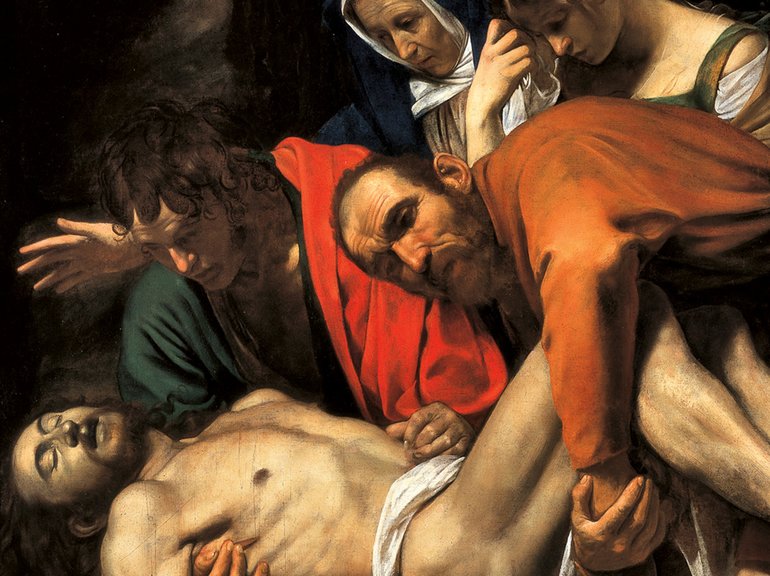
John, in fact, speaks about Nicodemus for the first time during the nocturnal dialogue with Jesus.
Nicodemus asks Christ: "How can a man be born when he is old? Can he perhaps enter his mother's womb a second time and be born again?".
Jesus then answers: "If one is not born of water and Spirit, he cannot enter the kingdom of God".
The heart of the dialogue is therefore the binomial between life and death, with Jesus speaking of death as a necessary passage for life and Nicodemus who cannot detach himself from his "mortal condition" seeing rebirth alone and only as a return to the womb.
Their dialogue is an encounter and at the same time a clash between the human and divine perspective, with death following birth and which in turn is followed by another birth, thus not representing a final limit, but an intermediate point.
John meets Nicodemus again at the very moment of Christ's burial. He recognizes him as a cultured and influential Jew who secretly followed Jesus and who, faced with his death, courageously comes out into the open to claim his body.
Nicodemus As An Artist
However, the Nicodemus painted by Caravaggio is an "anomalous Nicodemus". In the Titian's painting, indeed, the figure of Nicodemus is dressed in a manner appropriate to his rank and social role, being him a Pharisee and the leader of the Jews. That of Caravaggio is instead rude, barefoot and dressed in a work jacket.
But what work?
In the Legenda Aurea, Jacopo da Varazze narrates the tale according to which Nicodemus painted a famous portrait of Jesus, the miraculous crucifix of Beirut, which is linked to an interminable series of miraculous crucifixes.
Nicodemus takes on a further meaning: he is an artist, indeed he is even the progenitor of sacred artists, as a direct witness of the Passion of Christ.
But that Nicodemus, dressed in an artist's blouse, is not only a painter, but also a sculptor. That crooked nose and those hollowed cheeks give the face an unmistakable resemblance to the bust of Michelangelo Buonarroti made by Daniele da Volterra, exhibited today at the Buonarroti House. It is the same Michelangelo who had already portrayed himself in Nicodemo in the famous Pietà Bandini, preserved in the Museum of the Duomo.
Caravaggio As New Michelangelo
Caravaggio, whose real name is Michelangelo Merisi, looks at the art produced by Buonarroti as a container from which to draw elements that he could rework and reposition within the changed needs of art in the 17th Century.
Here then is the great sculptor, who competed with the ancient masters and prevailed over them, humbly dressed and barefoot: a first Michelangelo evoked by a second Michelangelo.
The Buonarroti evoked by Merisi.
Caravaggio therefore acquits perfectly to the commission's request: his Deposition speaks of life and death at the same time, but it is also a great icon, an exemplary display of art. Nicodemus is the pivot, the fundamental gear of this representation.
In the end, therefore, Michelangelo-Nicodemo is Caravaggio himself, who, looking at us, wants us to understand how the artist is always the main protagonist of his work, being a direct witness of it.
Painting, in fact, is not only a technical gesture, but an exercise in lived life, barefoot and with hands dirty of his work.
